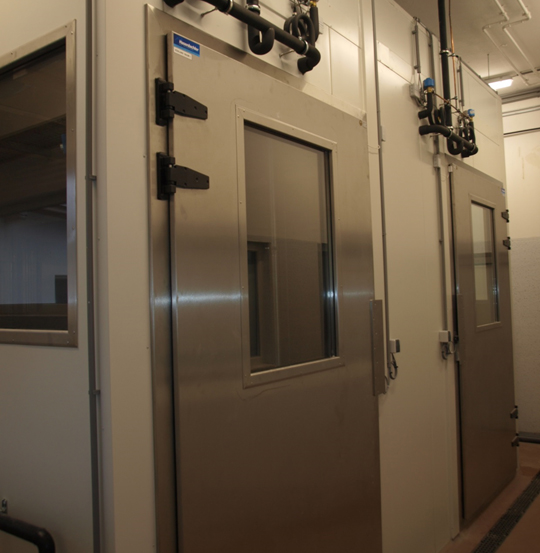Carrying out respiration measurements in respiratory chambers using the indirect calorimetry method.
Determination of methane, carbon dioxide, nitrous oxide and ammonia production of dairy cows of different genotypes.
Determination of the oxygen consumption of dairy cows of different genotypes.
Investigation of the influence of concentrate feed levels on gas emissions from dairy cows.
Comparison of TMR and green fodder feeding (pasture simulation) with regard to gas emissions from dairy cows.
Calculation of energy and protein balances of dairy cows based on data from respiration measurements as well as feed, milk, feces and urine analyses.
Statistical evaluation of the results.
Publication of the results in international journals as well as national and international specialist journals. Presentations at several national and international conferences.
One of the most important global issues today is climate change. In December 2015, (almost) all countries in the world committed themselves to taking measures to curb climate change in the Paris Agreement. One economic sector that contributes to climate change to some extent is agriculture. Methane emissions from ruminants in particular are repeatedly discussed as a significant factor in global warming. That is why there is a need to find strategies that can reduce methane emissions from animal husbandry.
Feeding and genotype are two major factors that influence the excretion of methane and other gases. By using different rations and cow genotypes, this project can provide important information for assessing milk production systems. It can be assumed that the data obtained from this can be used in the future to assess agricultural operations with regard to their greenhouse gas potential. Furthermore, the results can contribute to the further development of emission-reducing strategies in animal husbandry in collaboration with institutes from other countries (as part of the EU project METHAGENE).
In addition to determining greenhouse gas emissions from animal husbandry, the measurement method used is also suitable for metabolic balancing of dairy cows. By analyzing feed, milk, feces and urine as well as determining the cows' CO2 production and O2 consumption, the animals' energy and nutrient utilization can be assessed.
These measurements can be used to check the current feeding recommendations (energy and protein requirements) and adjust them if necessary.







